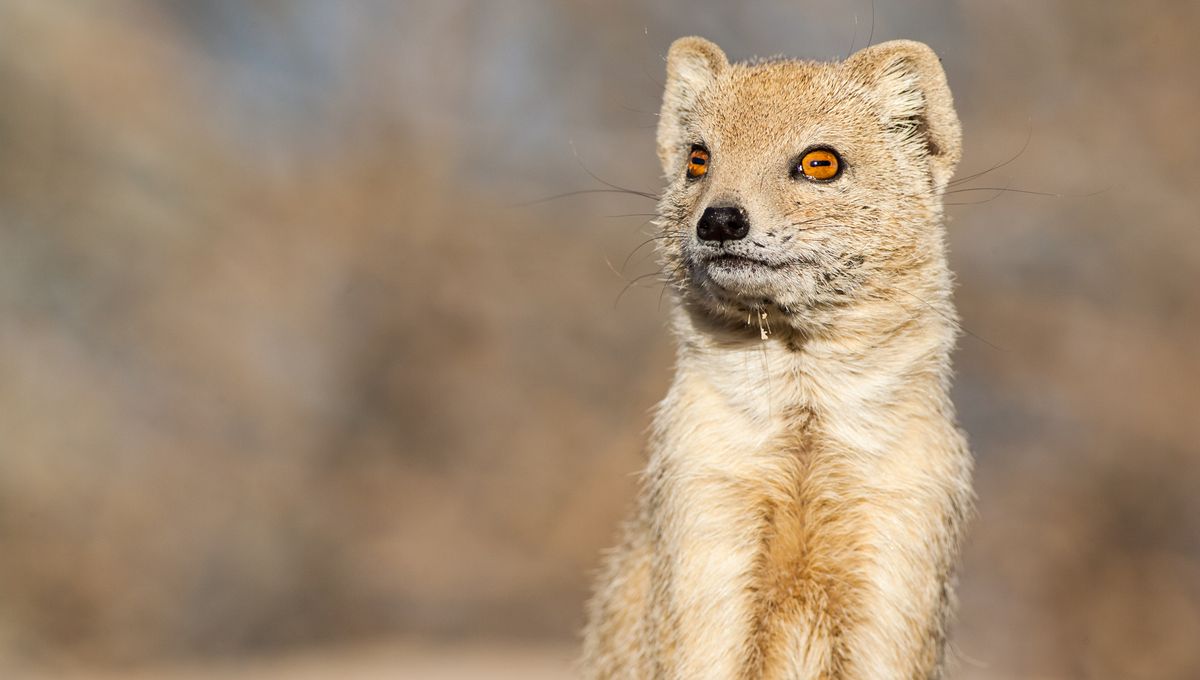
This article first appeared in Issue 16 of our free digital magazine CURIOUS.
Were you to stare into the eyes of a tiger, you might clock that it has round pupils – just like ours – moments before it severed your carotid. It could be assumed it’s a predatory adaptation, then, but look into the peepers of domestic cats and you’ll see they have vertical slits. What’s up with that?
We interviewed principal investigator Marty Banks of the Banks’ Lab, UC Berkeley’s visual space perception laboratory, to find out more about how and why pupil shape varies among terrestrial animals. It turns out there are some general rules, but the mongoose has no time for them.
How do pupils vary among animals?
MB: We looked at terrestrial animals, and there are three prominent shapes. One is circular, another is a vertically elongated slit, and finally, the horizontally elongated pupil.
Are they associated with certain lifestyles?
MB: Absolutely. The horizontal pupil – with only one exception we could find – is associated with prey animals. It was very clear that these animals tend to almost always have eyes on the side of their head instead of frontal eyes like we do.
How does that influence how they see the world?
MB: The fact that their eyes are on the side of their head allows them to see almost 360 degrees around them. Something we can’t do, obviously. The elongated pupil benefits that panoramic vision by letting in more light, so the left eye can see behind the animal on the left, and the longer pupil allows more light to get into that direction so they can see better.
Interestingly, the fact that the pupil is narrow vertically, has the effect of sharpening horizontal contours the animal might see. And they might well need that for placing their feet on the ground as they try to run away from a predator.
Subscribe to our newsletter and get every issue of CURIOUS delivered to your inbox free each month.
What about the vertical slit?
MB: Many of those animals have frontal eyes, not eyes on the side of the head, and they are very likely to be predators – quite likely ambush predators. These are predators that don’t run down their prey but rather wait and hide and then pounce when the prey comes close to them. The domestic cat is an example of that.
We also found a correlation between the animal’s height and whether they had a vertical slit pupil or not. Taller animals in the predator family tend to have circular pupils, like the lion and the tiger. And shorter animals like the domestic cat tend to have vertically slit pupils. We did a complicated analysis to show that actually makes sense.
We think these animals use blur as a cue to distance, helping them to judge the distance of the prey that they’re going to pounce on. That cue is more useful if the eye is close to the ground, and less useful if the eyes are above the ground and the animal is larger.
How does that work?
MB: Any photographer knows this, if they want to take a picture with a sharp image at one distance and a blurry background, or a blurred foreground, they open the aperture of their camera. That provides a very useful cue that the blurry things are farther away than the sharp things in the foreground.
Photographers do that with a circular aperture, these animals appear to do it through a vertical swing aperture. So, their vertically extended pupil is large, which creates a nice blur signal. The horizontal extend to the pupil is small, and our argument is that that’s useful for another depth cue called stereo offsets.
Are there animals that don’t fit the mold?
MB: There’s one very clear exception for which we have no explanation: the mongoose. It’s a small carnivorous mammal that has eyes on the front of its head. So, you’d expect them to have either a vertical slit pupil or a round pupil, but they have horizontal pupils. That animal does not fit our account at all.
CURIOUS magazine is a digital magazine from IFLScience featuring interviews, experts, deep dives, fun facts, news, book excerpts, and much more. Issue 19 is out now.
Source Link: Why Do Animals Have Different Pupil Shapes?